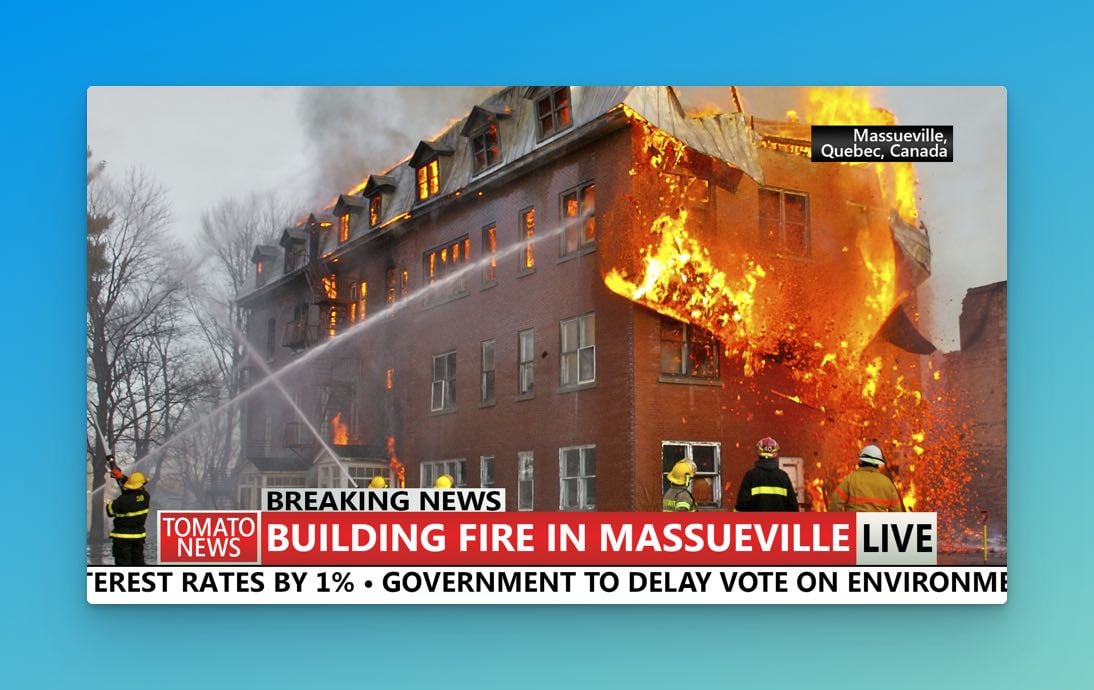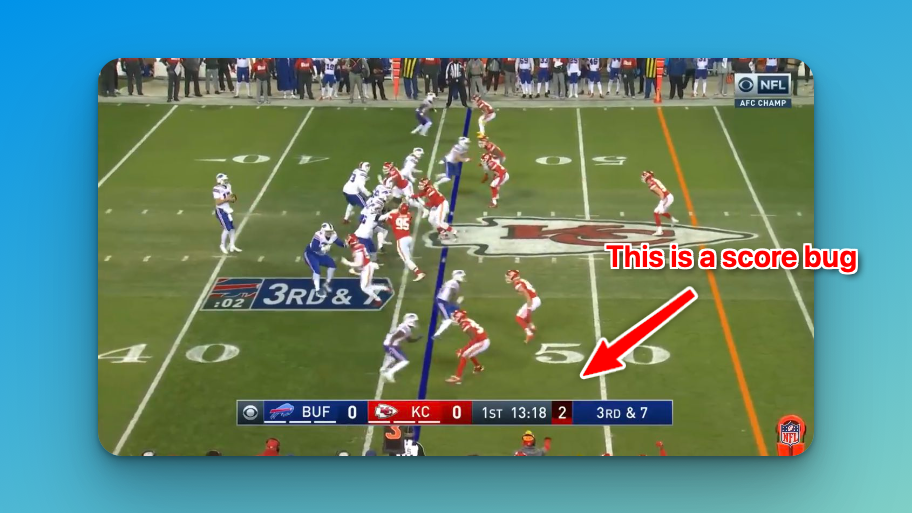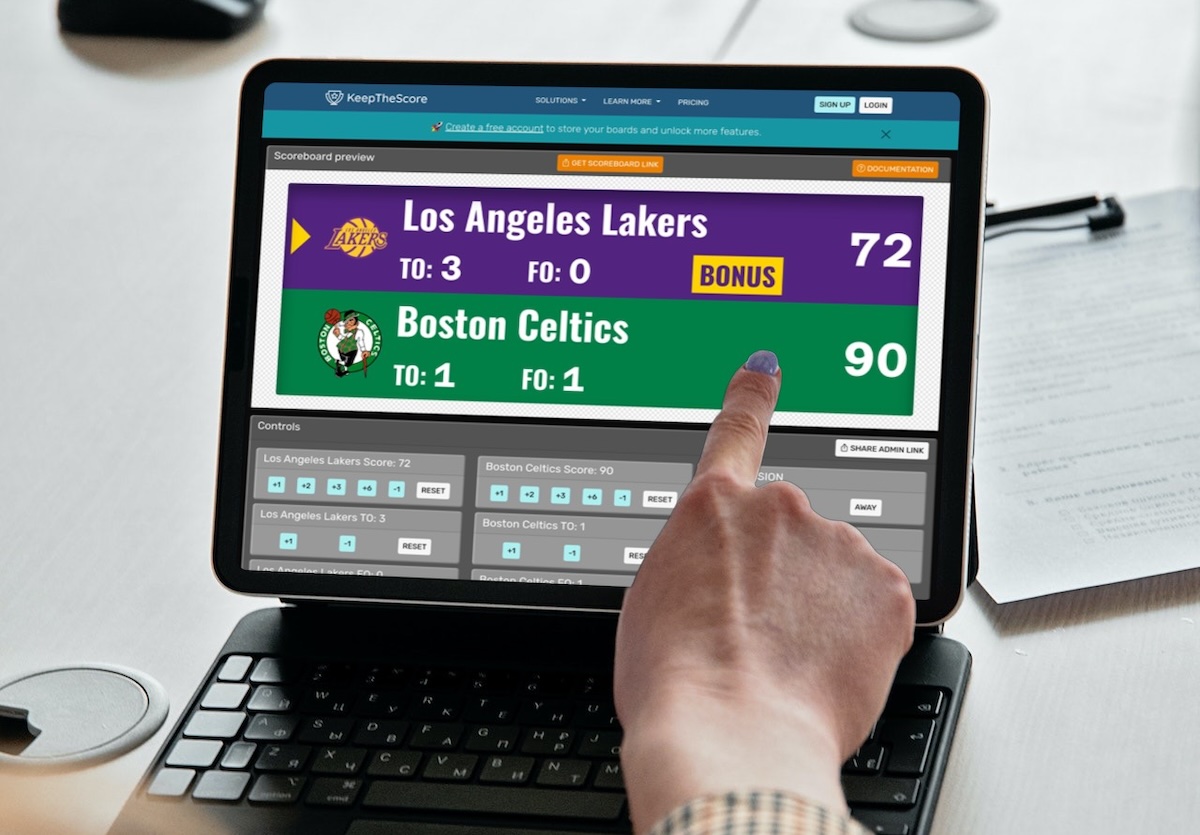What Are Lower Thirds?

Lower thirds are the text-based graphics placed in the lower third section of a video screen. Contrary to what the name implies, it doesn't have to take up the entire bottom third of the screen, but rather it resides within this area. These graphics primarily present additional context or details that augment the video content.
They can display information such as the name and title of the person on-screen, location details, news tickers, time and date, weather information, stock quotes, sports scores (similar to score bugs in sports broadcasting) or any vital data relevant to the content.
Lower thirds play a crucial role in enhancing the viewer's experience. They supplement visual content information without interrupting the flow of the video.
Terminology
Lower thirds can also be referred to as
- "CG" (short for character generator),
- Captions
- Chyrons (US only) due to the Chyron Corporation's early digital innovation—the Chiron I character generator developed in the 1970s.
Other terms for lower thirds vary geographically, with "superbars" or "supers" being common in the U.S., and "name straps" or "astons," named after Aston Broadcast Systems, used in the U.K.
When a video includes lower thirds, it's often referred to as a "program as broadcast" or "dirty." Conversely, videos without lower thirds are termed as "clean feed" or "textless." When preparing for international distribution, producers typically include textless elements on the master tape. These are sequences in the program where lower thirds or digital on-screen graphics are used, arranged sequentially, allowing engineers to create a clean master when needed.
Designing Lower Thirds
Designing lower thirds requires creativity, clarity, and conciseness. They should be eye-catching but not overwhelming, effectively delivering information without distracting from the main content.

Here are a few tips for beginners:
1. Less is More
The goal is to inform, not to distract. Keep the design simple, clean, and easy to read.
2. Color Selection
Choose colors that contrast well with the video content to ensure readability. However, they should still align with the overall color theme.
3. Typography
Use a clear, legible font. While a fancy font might look attractive, if it's hard to read, it defeats the purpose of the lower third.
4. Duration
The graphic should remain on the screen long enough for viewers to read comfortably, typically around 5-7 seconds.
Creating your own
As a beginner, you don't need high-end, complex software to create lower thirds. Programs like Adobe Premiere Pro, Final Cut Pro, and even Canva offer easy-to-use lower third templates. The template shown above is from one of the large stock-photo sites. Starting with a stock image and adjusting it to your needs is the quickest way to get started.
The key is to start simple, mastering the basics before exploring more complex designs and animations.
Animation
Animation adds a dynamic layer to lower thirds, but it's crucial to ensure the motion complements the tone of the video. A news broadcast might use a simple fade-in, fade-out, while a creative vlog could feature a more playful animation.
Don't go overboard!
Just as important as learning how to create lower thirds is understanding when and how to use them effectively. They should always add value to the viewer's experience, not serve as an annoyance or distraction. Be sure to keep them accurate, up-to-date, and relevant to the content.
Lower thirds, while simple in concept, play an instrumental role in enhancing video content, especially in broadcasting. Mastering their design and use marks an important step in becoming a proficient video editor or broadcaster. Remember, the key is to start simple and grow your skills from there. With practice, you'll soon be creating lower thirds that not only inform but also enhance the overall aesthetic of your video productions.

